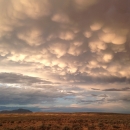Shrub-Steppe Restoration and Monitoring on Hanford Reach National Monument
Funding Year | Amount | Location |
FY24 | $ 185,000 | Grant County, Washington |
Project Description
USFWS aims to rehabilitate shrub-steppe habitat on the Hanford Reach National Monument, one of the last remaining large blocks of shrub-steppe ecosystem in Columbia River Basin. It is timely and vitally important to improve degraded areas by planting sagebrush sagebrush
The western United States’ sagebrush country encompasses over 175 million acres of public and private lands. The sagebrush landscape provides many benefits to our rural economies and communities, and it serves as crucial habitat for a diversity of wildlife, including the iconic greater sage-grouse and over 350 other species.
Learn more about sagebrush seedlings, native grasses and forbs and treat invasive annual grasses to reduce the impacts of invasive species invasive species
An invasive species is any plant or animal that has spread or been introduced into a new area where they are, or could, cause harm to the environment, economy, or human, animal, or plant health. Their unwelcome presence can destroy ecosystems and cost millions of dollars.
Learn more about invasive species , habitat fragmentation, wildfire, and climate change climate change
Climate change includes both global warming driven by human-induced emissions of greenhouse gases and the resulting large-scale shifts in weather patterns. Though there have been previous periods of climatic change, since the mid-20th century humans have had an unprecedented impact on Earth's climate system and caused change on a global scale.
Learn more about climate change .
Partners
Department of Energy, Washington Department of Fish and Wildlife, Washington Shrub Steppe Restoration and Resiliency Initiative, Washington Natural Heritage Program, and Washington Rare Plant Care and Conservation


